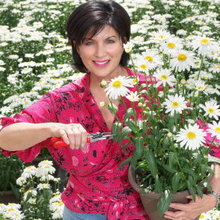Leading Landscape Designer for Magnificent Garden and Backyard Designs
Wiki Article
The Role of Yard Design in Supporting Sustainability and Biodiversity
Garden design is increasingly identified for its potential to foster sustainability and enhance biodiversity within urban and rural landscapes. By focusing on indigenous plant species and utilizing water preservation techniques, designers can create environments that not just grow but additionally require minimal chemical intervention. Including elements that support wild animals habitats is necessary in maintaining environmental equilibrium. As communities start to welcome these practices, the effects for both individual and collective ecological stewardship come to be profound. Yet, what are the particular methods that can properly bridge the space in between visual appeal and environmental duty?Value of Indigenous Plants
Highlighting making use of indigenous plants in yard style is vital for advertising eco-friendly equilibrium and sustainability. Indigenous plants are those that naturally happen in a particular region and have adapted to the local environment, dirt, and wild animals. Their consolidation right into gardens supports local ecosystems by providing environments and food resources for indigenous pollinators, birds, and other wildlife.
Water Conservation Strategies

Furthermore, executing rain gardens can capture and filter stormwater runoff, advertising groundwater recharge while decreasing disintegration - garden design near Larson SC. These gardens use indigenous plants that grow in wet conditions, successfully taking care of excess water while creating diverse habitats
Additionally, using compost in yard beds helps keep soil wetness, lowering dissipation and the frequency of watering (Landscape Designer). Organic mulches, such as wood chips or straw, likewise enhance soil health and wellness with time
An additional effective technique is the use of permeable paving materials in pathways and outdoor patios, enabling rainwater to infiltrate the ground rather than running. This promotes wetness retention and minimizes the need for watering.
Finally, setting up a rain harvesting system can substantially add to water preservation efforts. Gathering and saving rain for garden use encourages sustainable practices and decreases reliance on municipal water sources. By incorporating these strategies, yard styles can successfully advertise water preservation while sustaining ecological health and wellness.
Decreasing Chemical Usage
While several garden enthusiasts seek lively and healthy and balanced plants, lowering chemical use is essential for fostering a lasting environment. The dependence on synthetic fertilizers and chemicals can bring about dirt deterioration, water contamination, and a decrease in advantageous insect populaces. By taking on organic gardening techniques, garden enthusiasts can boost the health of their landscapes while promoting biodiversity.One efficient strategy is to use compost and natural changes, which enhance the soil normally and improve its framework. These methods not just improve plant health yet likewise reduce the requirement for chemical fertilizers. Applying integrated parasite administration (IPM) strategies additionally minimizes chemical inputs by motivating natural killers, such as ladybugs and parasitical wasps, to manage pest populaces.

Developing Wild Animals Habitats
Developing vivid wildlife habitats within yards not only enhances biodiversity yet likewise complements lasting gardening practices intended at minimizing chemical usage. By incorporating indigenous plants, garden enthusiasts can give important resources such as food and sanctuary for different species, consisting of birds, bugs, and small animals. Native plants are well-adapted to neighborhood conditions, calling for less water and less chemical inputs, hence aligning with sustainability objectives.The design of these environments can include varied layers of greenery, such as trees, hedges, and ground cover, which enhances architectural complexity and supplies different particular niches for wildlife (landscape designer near North Charleston SC). Additionally, attributes like water resources, such as tiny ponds or birdbaths, can attract and support a bigger array of types
Keeping a naturalistic method, which might include leaving some locations wild or undisturbed, permits the natural procedures of environments to thrive. This method encourages the visibility of advantageous pests and pollinators, which play an important duty in the health and wellness of both yards and surrounding atmospheres. Overall, producing wild animals habitats is a fundamental element of lasting garden style, fostering environmental equilibrium and resilience while improving the elegance and functionality of outside rooms.
Community Interaction in Horticulture
Community interaction in horticulture cultivates a sense of belonging and collective duty, changing individual gardening initiatives right into common initiatives that benefit the entire area. By entailing community members in gardening jobs, we can grow not just plants yet also connections and social media networks. Neighborhood yards act as vital areas for education, where people of any ages can discover lasting practices, biodiversity, and environmental stewardship.Collaborative gardening efforts, such as community gardens, promote the exchange of knowledge and resources, guaranteeing that all participants can contribute and benefit. This inclusivity enhances community resilience, as members collaborate to overcome challenges such as food insecurity and ecological destruction. In addition, area yards can offer as platforms for cultural expression, allowing people to share their heritage via varied growing and gardening methods.
Moreover, engaging the community in gardening campaigns can bring about raised understanding of regional communities and the significance of biodiversity. By working jointly to style and preserve these spaces, locals foster a common dedication to sustainability, developing an enduring influence on both the environment and area communication. Inevitably, neighborhood involvement in gardening is an effective tool for advertising ecological stewardship and boosting the quality of life within areas.
Final Thought
In verdict, strategic yard design considerably adds to sustainability and biodiversity (Landscape Designer). By stressing the usage of native plants, implementing water preservation strategies, and minimizing chemical inputs, gardens can efficiently support local ecosystems. Additionally, the creation of wildlife environments and cultivating area interaction better enhance environmental stewardship. Jointly, these methods not just enhance the beauty of areas however additionally promote eco-friendly balance, making yard layout a crucial element in the search of a sustainable future.Report this wiki page